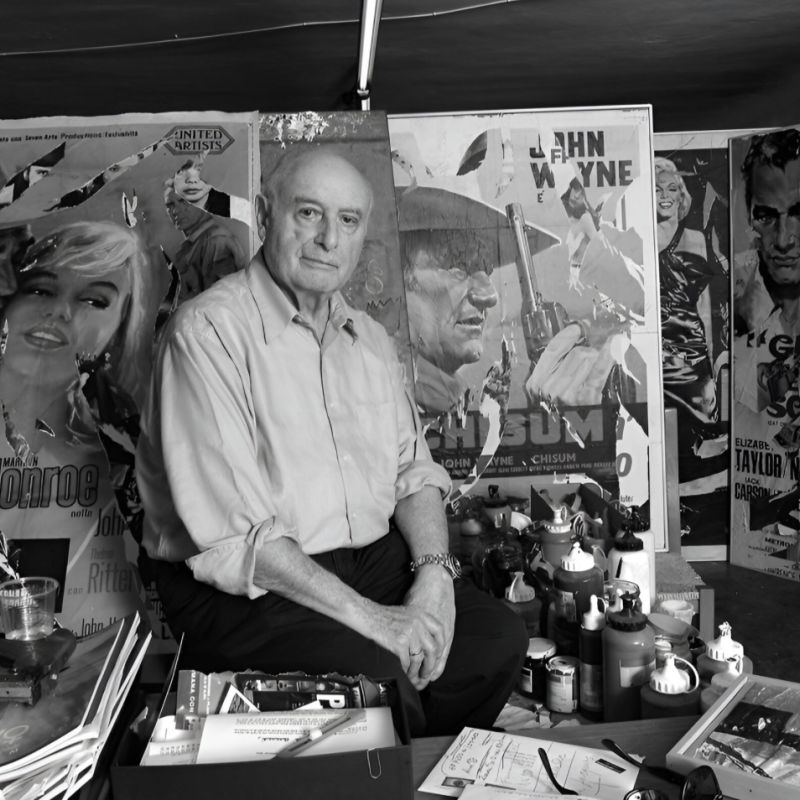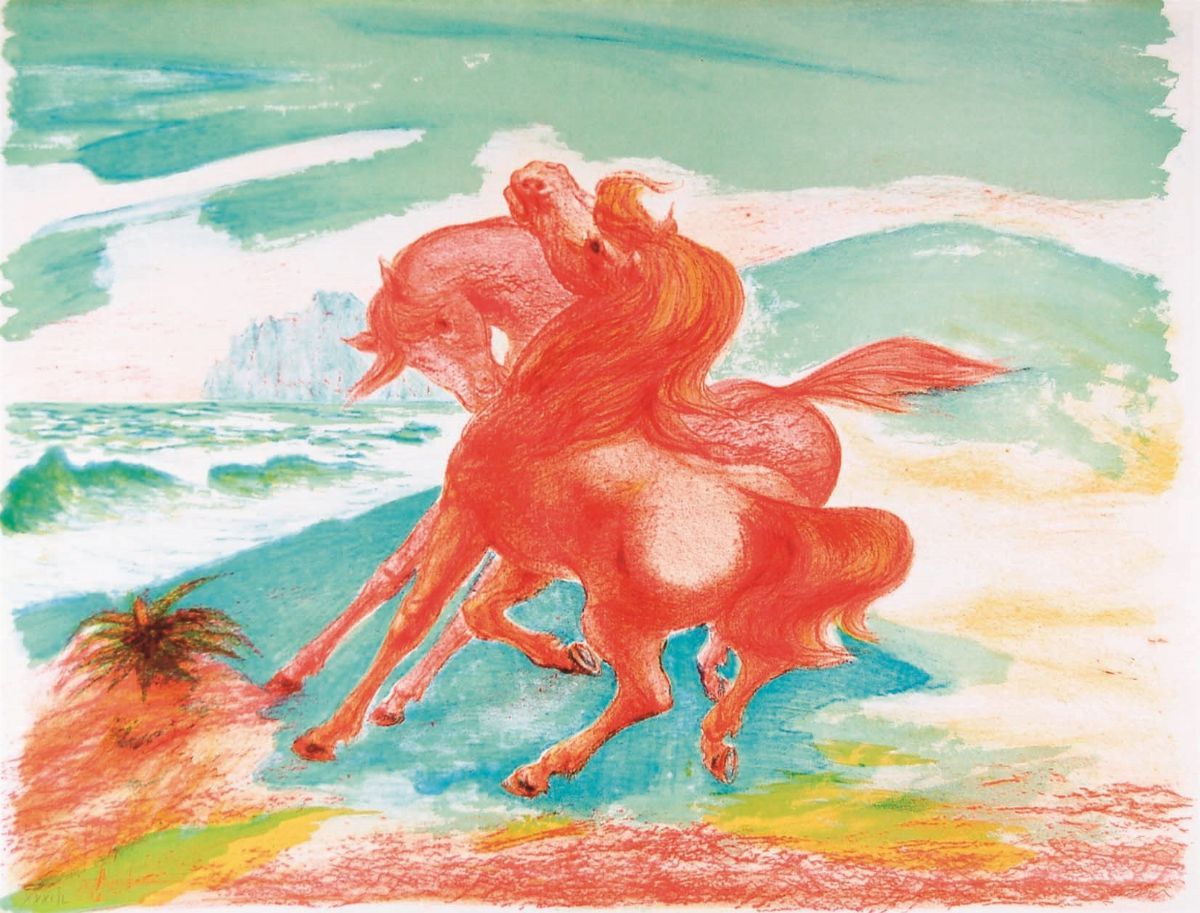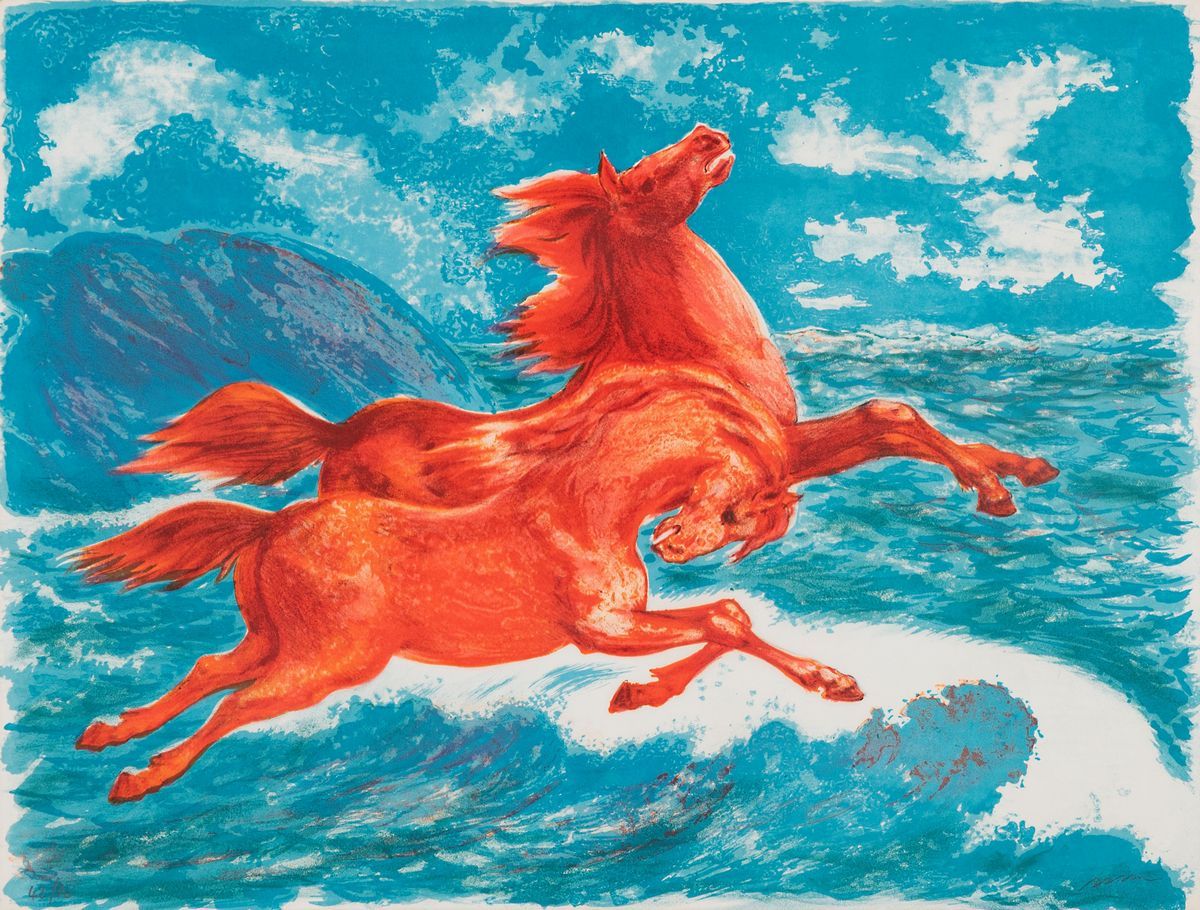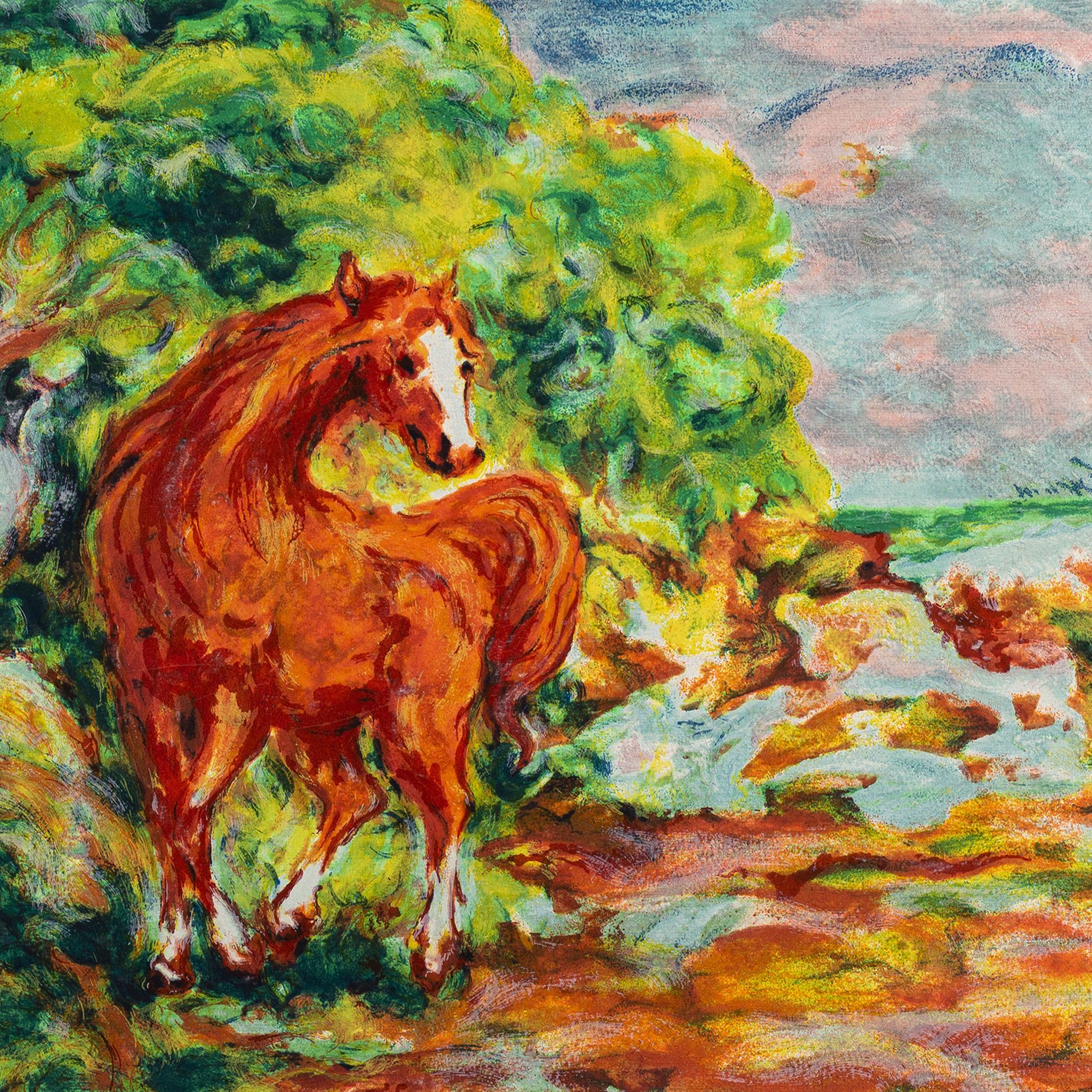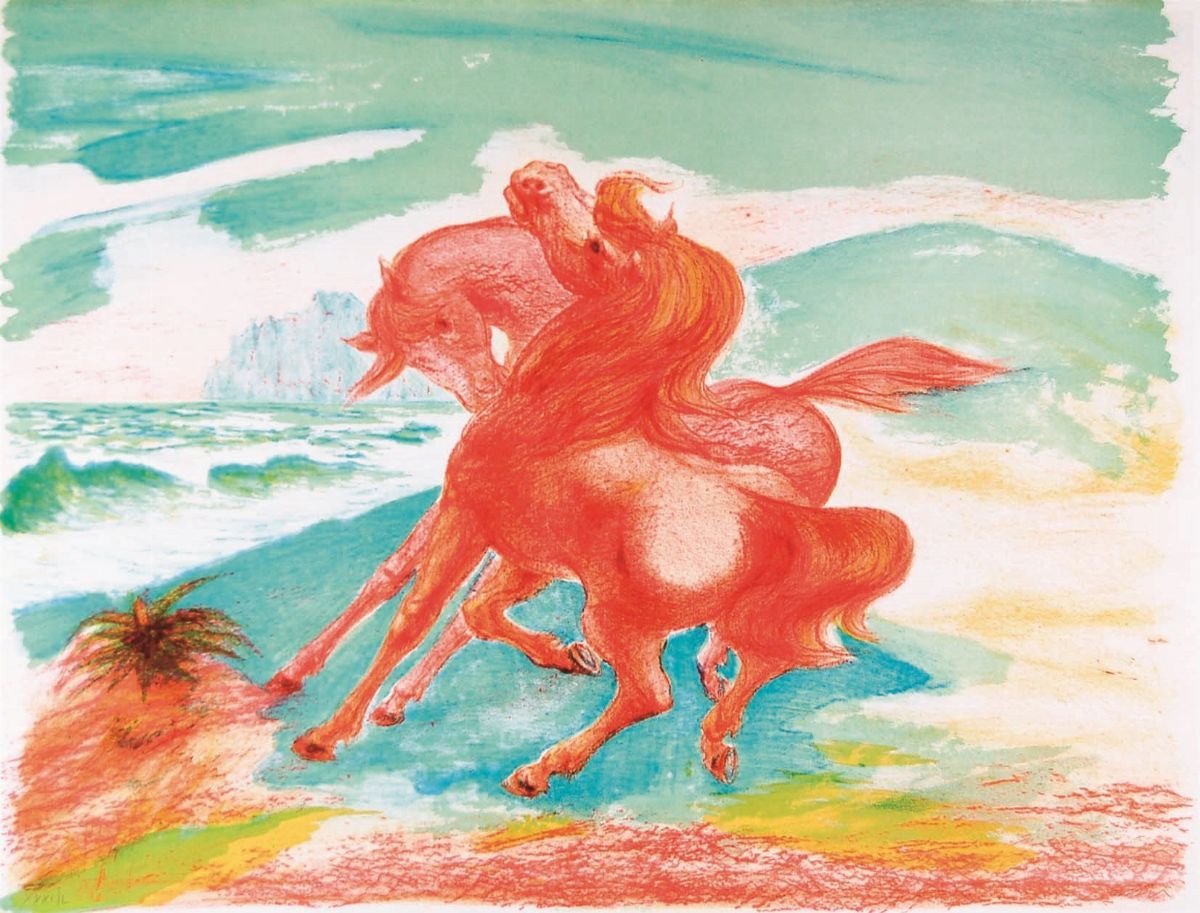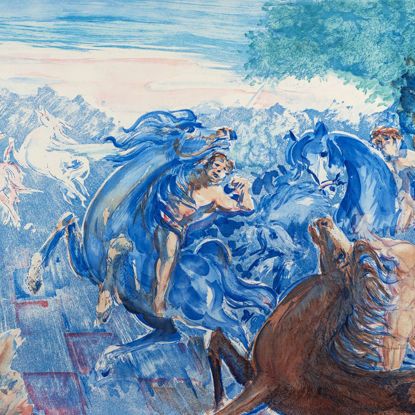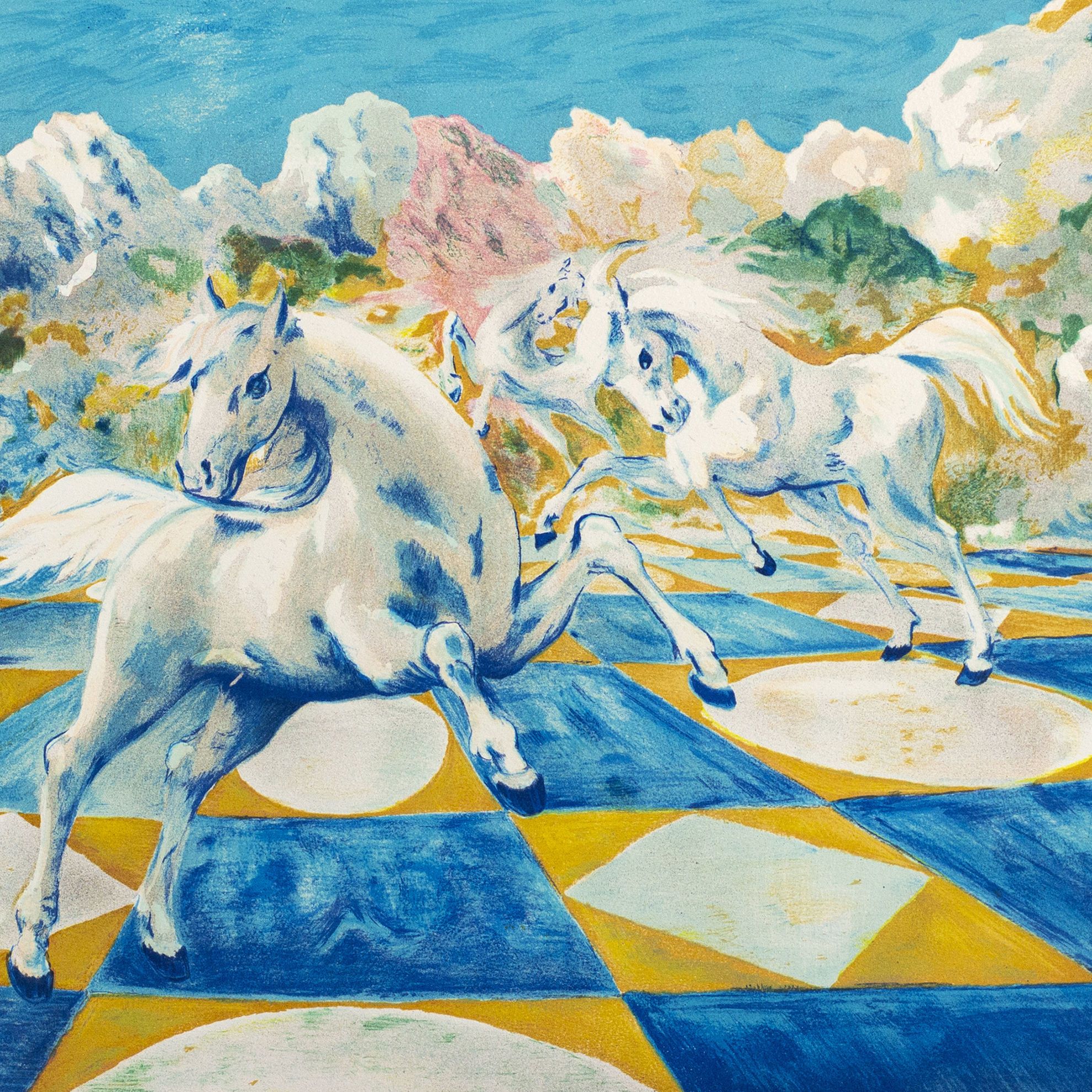Aligi Sassu, painter and sculptor, was born in Milan on 17 July 1912.
His father, linked by a strong friendship with Carlo Carrà, introduced him around the 1920s, at a very young age, to the National Futurist Exhibition at the Moretti Gallery in Palazzo Cova, in which the greatest Futurists and young talents participated. A few years later, moved with his family to Sardinia and at that time he came into contact for the first time with horses, which became a personal brand combined with the bright colors of Sardinia that will impregnate his characteristic painting. After a three-year in Sardinia, the family returned to Milan and here Aligi showed even more intensely his interest in reading and futurist art.
For a time, he worked as an apprentice at the Pressa, a lithographic workshop; the following year, the assistant of a mural decorator; in the meantime he attended evening classes. Together with his friend Bruno Munari, he got to know Filippo Tommaso Marinetti. This meeting was very important, in fact in 1928, he was invited by Marinetti himself to participate in the Venice Biennale.
Later, together with Bruno Munari, he defined the Painting Manifesto "Dynamism and muscular reform", preferring the representation of unconventional and anti-naturalistic dynamic forms.
Over the years he has held numerous exhibitions around the world, in Seville, Germany, Madrid, Toronto, Montreal and Ottawa. In the 1980s he exhibited in Palma de Mallorca, at the 11th Quadriennale in Rome, at the Triennale in Milan and at the Casa del Mantegna in Mantua and Munich, in the same year he completed 113 panels on the Divine Comedia.
In 1992 he participated in the project in South America "Italian Art" in the world showing in various cities such as São Paulo, Bogota and Buenos Aires.
He died in Pollença on July 17, 2000, at the age of 88, on his birthday.
